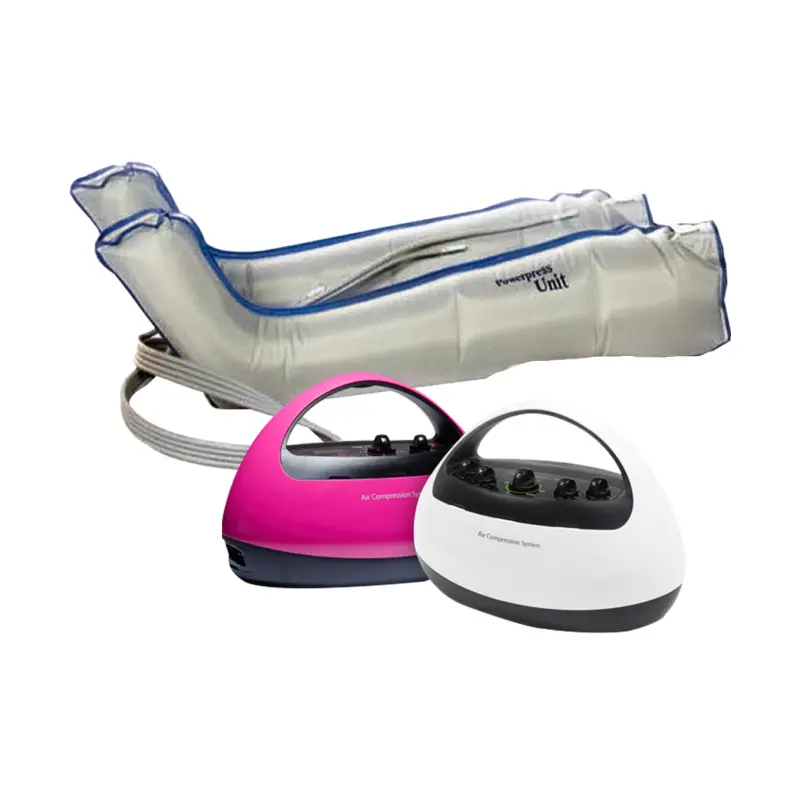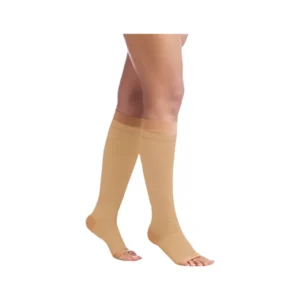Description
What is a Lymphoedema Pump?
- A lymphoedema pump is an electrically powered device that uses intermittent pneumatic compression (IPC) to apply controlled pressure to the affected limb.
- It consists of an inflatable sleeve or garment (worn on the arm, leg, or other affected area) connected to a pump unit. The sleeve inflates and deflates in a rhythmic pattern to mimic the natural movement of lymph fluid through the body.
How Does It Work?
- The pump applies graded pressure to the limb, starting from the distal end (farthest from the body, e.g., hand or foot) and moving proximally (toward the body, e.g., shoulder or hip).
- This sequential compression helps:
- Move stagnant lymphatic fluid out of the affected area.
- Reduce swelling and discomfort.
- Improve circulation and prevent fibrosis (hardening of tissues).
Indications for Use
Lymphoedema pumps are typically recommended for:
- Primary Lymphoedema: Caused by genetic abnormalities in the lymphatic system.
- Secondary Lymphoedema: Resulting from damage to the lymphatic system due to:
- Cancer treatments (e.g., surgery, radiation therapy).
- Infections (e.g., cellulitis).
- Trauma or injury.
- Chronic Venous Insufficiency: A condition where veins struggle to return blood to the heart, leading to swelling.
- Post-Surgical or Post-Traumatic Swelling: To reduce fluid buildup after surgery or injury.
Benefits of Using a Lymphoedema Pump
- Reduces Swelling: Helps drain excess lymphatic fluid from the affected area.
- Improves Mobility: Reduces stiffness and makes movement easier.
- Prevents Complications: Lowers the risk of infections (e.g., cellulitis) and fibrosis.
- Enhances Quality of Life: Alleviates discomfort and improves daily functioning.
- Complements Other Therapies: Often used alongside manual lymphatic drainage (MLD), compression garments, and exercise.
Types of Lymphoedema Pumps
- Single-Chamber Pumps:
- Apply uniform pressure to the entire limb.
- Less effective for lymphoedema but may be used for mild swelling.
- Multi-Chamber Pumps:
- Have multiple compartments that inflate sequentially.
- Provide gradient pressure, making them more effective for lymphoedema management.
- Programmable Pumps:
- Allow customization of pressure settings, timing, and sequence.
- Ideal for patients with specific needs or severe lymphoedema.
- Portable Pumps:
- Lightweight and battery-operated for use at home or on the go.
- Convenient for long-term management.
How to Use a Lymphoedema Pump
- Step 1: Place the inflatable sleeve on the affected limb.
- Step 2: Connect the sleeve to the pump unit.
- Step 3: Set the pressure and timing as prescribed by a healthcare provider.
- Step 4: Turn on the device and allow it to cycle through compression and relaxation phases.
- Step 5: Use for the recommended duration (typically 30 minutes to 2 hours per session).
Precautions and Contraindications
While lymphoedema pumps are generally safe, they may not be suitable for everyone. Contraindications include:
- Acute Infections: Such as cellulitis or untreated wounds.
- Deep Vein Thrombosis (DVT): Risk of dislodging a blood clot.
- Severe Arterial Disease: Compression may reduce blood flow to the limb.
- Congestive Heart Failure: Fluid shifts could strain the heart.
Always consult Healthcare Needs before using a lymphoedema pump.
Combining with Other Therapies
Lymphoedema pumps are most effective when used as part of a comprehensive treatment plan, which may include:
- Manual Lymphatic Drainage (MLD): A therapeutic massage technique designed to promote lymphatic circulation.
- Compression Garments: Worn to maintain reduced swelling after pump therapy.
- Exercise: Gentle movements to promote lymphatic drainage.
- Skin Care: Maintaining clean and moisturized skin to reduce the risk of infections.
Cost & Accessibility
- Certain insurance plans may provide coverage if prescribed by a physician.
- Portable and home-use models are widely available for purchase or rental.
Maintenance and Care
- Clean the sleeves regularly to prevent infections.
- Check the pump and tubing for wear and tear.
- Adhere to the manufacturer’s guidelines for correct usage and storage.
When to Seek Professional Guidance
- If swelling worsens or does not improve with pump therapy.
- If you experience pain, redness, or warmth in the affected limb (signs of infection).
- If you have underlying health conditions that may affect pump use.
Lymphoedema pump is a valuable tool for managing lymphoedema and improving quality of life. However, it should be used under the guidance of a healthcare professional like Healthcare Needs, such as a lymphoedema therapist or physiotherapist, to ensure safety and effectiveness. Combining pump therapy with other treatments can provide the best outcomes for patients with lymphoedema.



